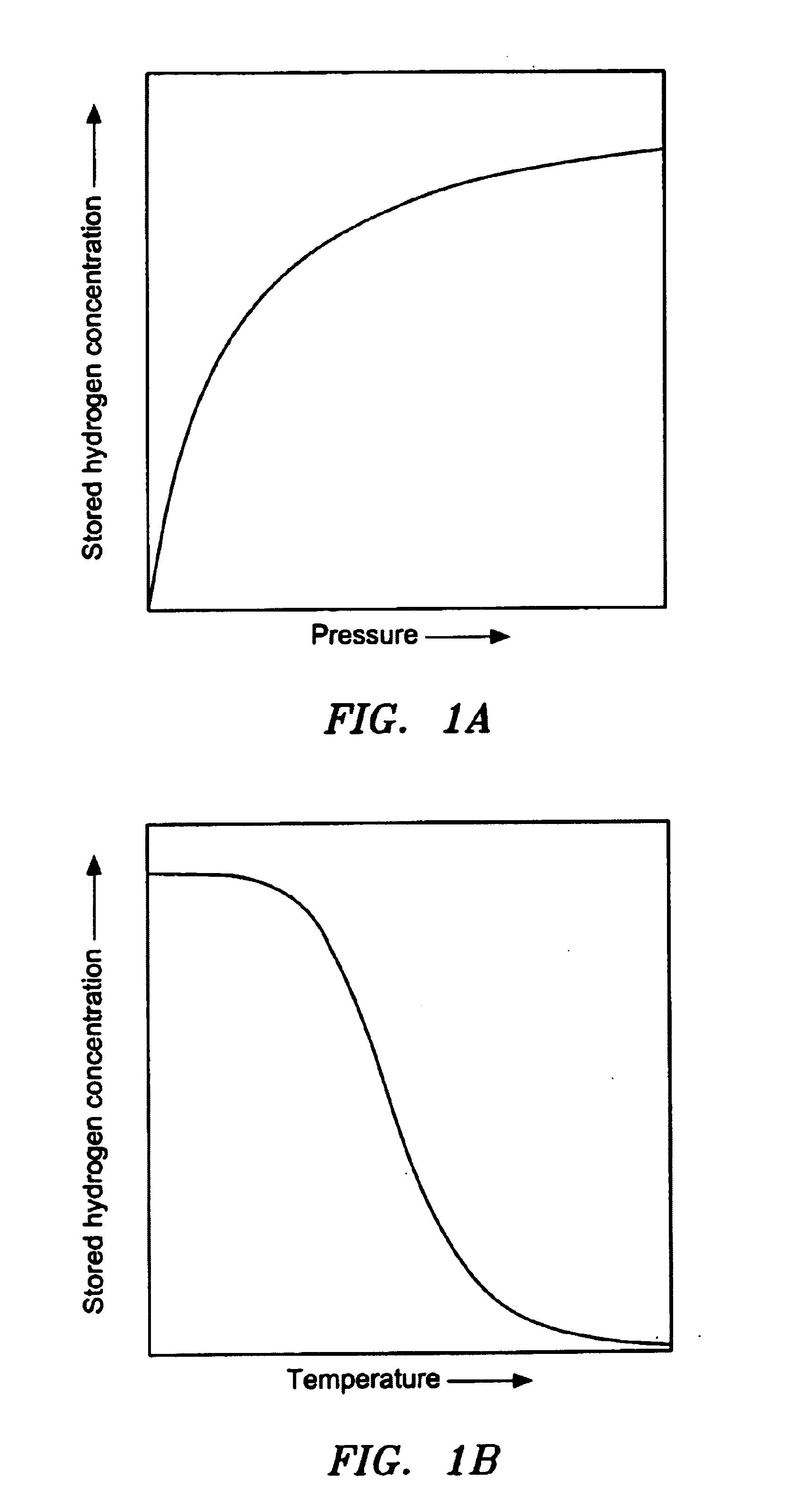Operation of a hydrogen storage and supply system
a hydrogen storage and supply system technology, applied in the field of storage of hydrogen, can solve the problems of very effective hydrogen diffusion, current paucity of fully satisfactory systems, and effective prevention of such diffusion, and achieve the effect of facilitating the release of stored hydrogen, facilitating the movement of hydrogen through the loop, and facilitating the release of hydrogen
- Summary
- Abstract
- Description
- Claims
- Application Information
AI Technical Summary
Benefits of technology
Problems solved by technology
Method used
Image
Examples
Embodiment Construction
The Cryosorptive Storage System: Features and General Operating Considerations
[0031]By adsorbing hydrogen on a high surface area medium at cryogenic temperatures, hydrogen can be stored densely at low pressures. Two areas of technology development will contribute to this area of commercial development and application. First, hydrogen storage media should be improved in terms of binding energy, storage capacity, and overall density. The first commercially practical porous hydrogen storage medium is likely to be either modified carbon, or boron nitrides, or new high-binding-energy media. Applicant has recently submitted a U.S. Patent Application (Jhi et al., Boron Oxide and Related Compounds for Hydrogen Storage), which provides an example of such a hydrogen storage medium. A second important area of technology development involves the engineering of effective containers and surrounding operating systems to accommodate and enable this form of hydrogen storage. In general, container te...
PUM
 Login to View More
Login to View More Abstract
Description
Claims
Application Information
 Login to View More
Login to View More - R&D
- Intellectual Property
- Life Sciences
- Materials
- Tech Scout
- Unparalleled Data Quality
- Higher Quality Content
- 60% Fewer Hallucinations
Browse by: Latest US Patents, China's latest patents, Technical Efficacy Thesaurus, Application Domain, Technology Topic, Popular Technical Reports.
© 2025 PatSnap. All rights reserved.Legal|Privacy policy|Modern Slavery Act Transparency Statement|Sitemap|About US| Contact US: help@patsnap.com



